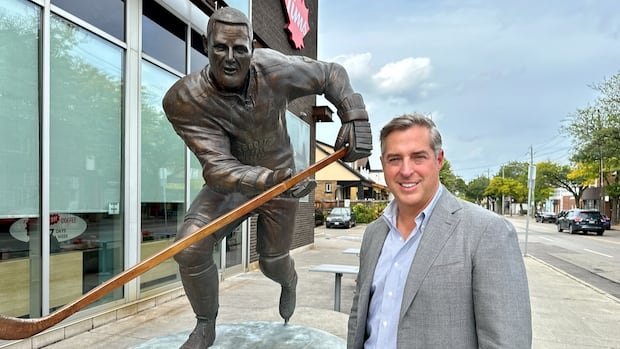At the original Tim Hortons donut shop location, visitors can now easily explore remnants of the coffee shop’s past. Formerly housed on the second floor, the museum at the Ottawa Street N. site in Hamilton has been relocated to the main restaurant area following a recent redesign.
The decision to move the museum downstairs was driven by the desire to make it more accessible to patrons, explained Brian Noviski, Tim Hortons’ vice president of architecture and design. The previous location was challenging to reach, and many items were showing signs of sun damage.
Today, glass showcases near the counter and seating area on the ground floor exhibit various artifacts, including a Timbit piggy bank resembling the chain’s original mascot and the oldest Tim’s cup in their possession. The museum reflects the history of Tim Hortons, tracing back to its inception in 1964 when the first store was opened by Tim Horton, a former Toronto Maple Leafs player.
Ron Joyce, a Hamiltonian, was the first franchisee chosen by Horton for expansion. Following Horton’s passing a decade later, Joyce, who eventually became a billionaire, assumed control of the business.
The museum features elements representing Horton’s sports journey, including colors from the teams he played for such as the Toronto Maple Leafs, New York Rangers, Pittsburgh Penguins, and Buffalo Sabres. Notably, the museum showcases the original yellow packaging bearing the name “Tim Horton” before the addition of the “s,” along with a replica of the initial sign.
The restaurant’s design incorporates subtle nods to the brand’s Canadian heritage, like maple ceiling tiles. Additionally, details such as hanging lights resembling hockey face shields and a counter screen displaying Hamilton’s skyline enhance the overall ambiance.
Tim Hortons, part of Restaurant Brands International (RBI), is owned by a consortium of affluent entities, including a Brazilian investment firm, an American investment management company, and various Canadian banks. RBI also holds ownership of Burger King, Popeyes, and Firehouse Subs.
Brian Noviski, Tim Hortons’ vice president of architecture and design, revealed that Tim Hortons locations undergo renovations approximately every ten years, with advancements in technology influencing design changes to accommodate features like mobile pickup and ordering kiosks. Noviski emphasized the importance of understanding customer behavior when entering a Tim Hortons outlet to ensure a seamless and welcoming experience.
The museum’s evolution will continue over time as they refurbish existing items and acquire new ones. Noviski expressed gratitude for guests’ contributions and their enthusiasm for preserving the brand’s history. The museum’s relocation to the main floor has paved the way for utilizing the upstairs area for staff training sessions.

